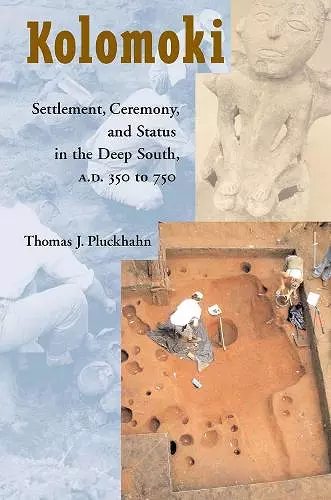Kolomoki
Settlement, Ceremony, and Status in the Deep South, AD 350 to 750
Format:Paperback
Publisher:The University of Alabama Press
Published:18th Sep '03
Should be back in stock very soon

Kolomoki - one of the most impressive archaeological sites in the southeastern United States - includes at least nine large earthen mounds in the lower Chattahoochee River valley of southwest Georgia. The largest, Mound A, rises approximately 20 meters above the terrace that borders it. From its flat-topped summit, a visitor can survey the string of smaller mounds that form an arc to the south and west. Archaeological research had previously placed Kolomoki within the Mississippian period (ca. A.D. 1000-1500) primarily because of the size and form of the mounds. But this book presents data for the main period of occupation and mound construction that confirm an earlier date, in the Woodland period (ca. A.D. 350-750). Even though the long-standing confusion over Kolomoki's dating has now been settled, questions remain regarding the lifeways of its inhabitants. Thomas Pluckhahn's research has recovered evidence concerning the level of site occupation and the house styles and daily lives of its dwellers. He presents here a new, revised history of Kolomoki from its founding to its eventual abandonment, with particular attention to the economy and ceremony at the settlement. This study makes an important contribution to the understanding of ""middle range"" societies, particularly the manner in which ceremony could both level and accentuate status differentiation within them. It provides a readable overview of one of the most important - but historically least understood - prehistoric Native American sites in the United States.
This book is the foundation for a new and exciting archaeology of enigmatic Kolomoki and for the archaeology of similar ceremonial centers around the world. - Timothy R. Pauketat University of Illinois
ISBN: 9780817350178
Dimensions: unknown
Weight: 482g
272 pages